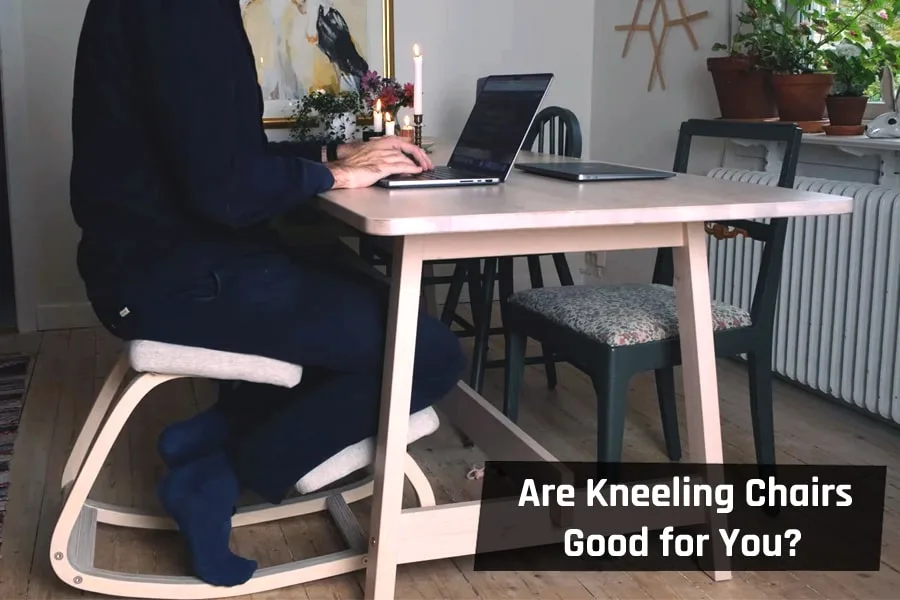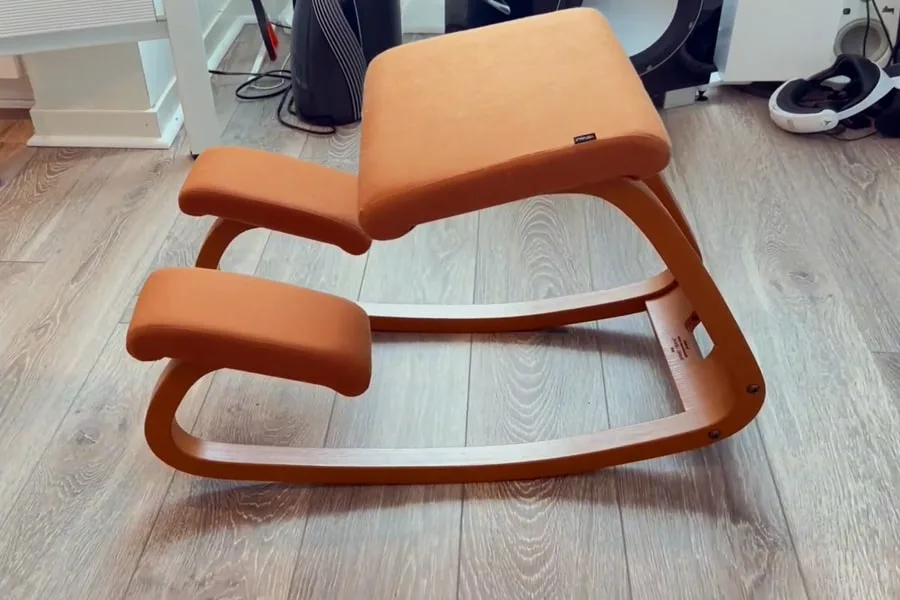People’s experiences with kneeling chairs vary, highlighting both benefits and potential drawbacks. One user found a kneeling chair comfortable for posture and back health but faced challenges in frequent movements. Another individual struggled to find a comfortable position in traditional chairs, leading them to discover relief by kneeling on a pillow at their computer.
- Kneeling chairs offer benefits like improved posture and reduced lower back pain.
- Effective use depends on individual preferences and conditions.
- Varied user experiences highlight pros and cons.
A different user initially enjoyed a kneeling chair’s back benefits but eventually experienced discomfort in the knees and legs after extended use.
Conversely, another user with lower back issues found the kneeling chair more beneficial than conventional options, emphasizing the importance of selecting the right chair based on individual needs.
The effectiveness of kneeling chairs depends on personal preferences, usage patterns, and physical conditions, making it crucial to weigh the pros and cons before deciding if kneeling chairs are good for one’s overall well-being.

When is it a Good Idea to Use a Kneeling Chair for Sitting Comfortably?
You should use a special chair when you have short tasks that make you lean forward, like drawing, sewing, or typing on a computer.
It’s better for short periods because the chair keeps your legs in one position, which can make your knees uncomfortable and slow down the blood flow to your legs.
If you’re tall, a special chair might not be comfy for a long time. You can switch between your regular office chair and the special chair to get the most benefits.
The first time you use the special chair, you might feel weird or stiff. Your bones and muscles are used to one way of sitting, so it will take time for them to get used to the new position.
If you’ve been sitting in a bad position for a long time, your body needs to strengthen its core muscles in the lower back. You can do different exercises to make them stronger.
What are the Benefits of Kneeling Chair?
Find the benefits of kneeling chair from the below section
Improved Posture and Spinal Alignment
Kneeling chairs promote a more natural and open hip angle, which encourages an upright posture. This helps align the spine properly, reducing strain on the lower back and promoting better overall spinal health.
By distributing weight between the buttocks and knees, these chairs facilitate a more balanced and comfortable sitting position.
Reduced Lower Back Pain
One of the primary benefits of kneeling chairs is their potential to alleviate lower back pain. By promoting a forward-tilting position, these chairs engage the core muscles and reduce pressure on the lumbar spine.
This can be particularly beneficial for individuals who experience discomfort from prolonged periods of sitting.
Active Sitting and Core Strengthening
Kneeling chairs encourage a dynamic and active sitting posture, engaging the muscles of the abdomen, back, and legs. This constant engagement helps strengthen core muscles over time, contributing to better overall stability and musculoskeletal health.
Enhanced Circulation and Oxygen Intake
The open hip angle in kneeling chairs prevents compression of blood vessels in the legs, improving blood circulation.
This increased blood flow can reduce the risk of numbness and tingling while supplying more oxygen to muscles, potentially reducing fatigue during prolonged periods of sitting.
Versatility and Task-Specific Use
Kneeling chairs are well-suited for tasks that require forward-leaning positions, such as writing, drawing, or using a computer.
While not ideal for all-day use, incorporating a kneeling chair into a flexible seating arrangement alongside a traditional chair allows users to reap the benefits without potential discomfort from extended use.

How Should You Sit in a Kneeling Chair for Maximum Comfort?
You should maintain a sitting position in a kneeling chair. Here I shared the correct style step by step.
Step 01: Weight Distribution
Make sure most of your weight is on your bottom. The knee pad is there to give support to your shins and knees.
Step 02: Initial Seating
When you first sit in the special chair, begin by placing yourself on the kneeling seat.
Step 03: Transition into Kneeling Position
Move your body into a kneeling position from the initial seated position. Keep your weight centered on your bottom to maintain balance and comfort.
Step 04: Variation in Sitting Positions
It’s crucial to change your sitting position throughout the day for better comfort. One option is to place both feet on the floor with your legs stretched out.
Another alternative is to keep your right knee on the pad while extending your left foot to the floor. Periodically switch between both legs to prevent stiffness and enhance flexibility.
FAQ
Can I sit on a kneeling chair for a long period?
While kneeling chairs offer benefits like improved posture and reduced lower back pain, sitting on them for extended periods may cause discomfort or stiffness. It’s advisable to alternate between a kneeling chair and a traditional chair throughout the day to balance the benefits and prevent potential strain from prolonged use.
Are kneeling chairs comfortable?
Comfort with kneeling chairs varies among individuals. Some find them comfortable, especially for short tasks promoting good posture. However, others may initially experience awkwardness or stiffness. Personal preferences, body structure, and the duration of use contribute to comfort levels, so trying one out before prolonged use is recommended.
Final Words
The suitability of kneeling chairs depends on individual preferences, body characteristics, and usage patterns.
While they offer potential benefits like improved posture and reduced lower back pain, comfort varies among users.
Alternating between a kneeling chair and a traditional chair may strike a balance. Trying one out and considering personal needs is essential to determine if kneeling chairs are a good fit for overall well-being.
